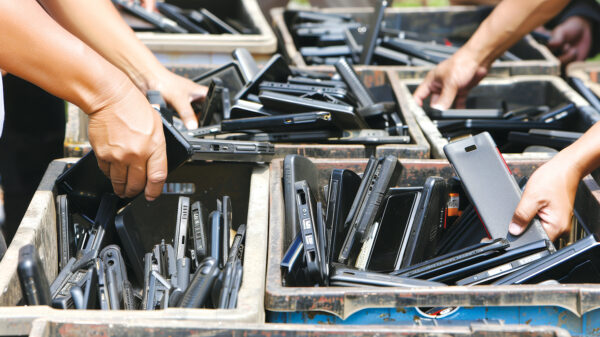The Department of the Interior recently published a list of 35 mineral commodities considered critical to the economic and national security of the U.S. This list was the initial focus of a multi-agency strategy to implement president Donald J. Trump’s Executive Order to break America’s dependence on foreign minerals.
At the direction of secretary Zinke, Interior’s U.S. Geological Survey published a draft list of 35 critical minerals under Executive Order 13817.
After consideration of the 453 public comments received, the Department of the Interior decided that the methodology used to draft the list remains valid and finalized the original list in the Federal Register.
“The expertise of the USGS is absolutely vital to reducing America’s vulnerability to disruptions in our supply of critical minerals,” said Dr. Tim Petty, assistant secretary of the Interior for Water and Science.
The list includes aluminum – used in almost all sectors of the economy; the platinum group metals – used for catalytic agents; rare-earth elements – used in batteries and electronics; tin – used as protective coatings and alloys for steel; and titanium – overwhelmingly used as a white pigment or as a metal alloy. A full list follows.
This list of critical minerals, while final, is not intended as a permanent designation of criticality, but will be a dynamic list updated periodically to represent current data on supply, demand, and concentration of production, as well as current policy priorities.
Under the Executive Order, the Commerce Department is responsible for organizing the interagency responses into a final report. The report will include:
•A strategy to reduce the nation’s reliance on critical minerals
•The status of recycling technologies
•Alternatives to critical minerals
•Options for accessing critical minerals through trade with allies and partners
•A plan for improvements to mapping the U.S. and its mineral resources
•Recommendations to streamline lease permitting and review processes
•Ways to increase discovery, production, and domestic refining of critical minerals
The full list of critical minerals includes the following:
•Aluminum (bauxite), used in almost all sectors of the economy
•Antimony, used in batteries and flame retardants
•Arsenic, used in lumber preservatives, pesticides, and semi-conductors
•Barite, used in cement and petroleum industries
•Beryllium, used as an alloying agent in aerospace and defense industries
•Bismuth, used in medical and atomic research
•Cesium, used in research and development
•Chromium, used primarily in stainless steel and other alloys
•Cobalt, used in rechargeable batteries and superalloys
•Fluorspar, used in the manufacture of aluminum, gasoline, and uranium fuel
•Gallium, used for integrated circuits and optical devices like LEDs
•Germanium, used for fiber optics and night vision applications
•Graphite (natural), used for lubricants, batteries, and fuel cells
•Hafnium, used for nuclear control rods, alloys, and high-temperature ceramics
•Helium, used for MRIs, lifting agent and research
•Indium, mostly used in LCD screens
•Lithium, used primarily for batteries
•Magnesium, used in furnace linings for manufacturing steel and ceramics
•Manganese, used in steelmaking
•Niobium, used mostly in steel alloys
•Platinum group metals, used for catalytic agents
•Potash, primarily used as a fertilizer
•Rare earth elements group, pri-marily used in batteries and electronics
•Rhenium, used for lead-free gasoline and superalloys
•Rubidium, used for research and development in electronics
•Scandium, used for alloys and fuel cells
•Strontium, used for pyrotechnics and ceramic magnets
•Tantalum, used in electronic components, mostly capacitors
•Tellurium, used in steelmaking and solar cells
•Tin, used as protective coatings and alloys for steel
•Titanium, overwhelmingly used as a white pigment or metal alloys
•Tungsten, primarily used to make wear-resistant metals
•Uranium, mostly used for nuclear fuel
•Vanadium, primarily used for titanium alloys
•Zirconium, used in the high-temperature ceramics industries
Under the Executive Order, these commodities qualify as “critical minerals” because each has been identified as a non-fuel mineral or mineral material that is essential to the economic and national security of the U.S., that has a supply chain vulnerable to disruption, and that serves an essential function in the manufacturing of a product, the absence of which would have significant consequences for the economy or national security.
Published in the September 2018 Edition







